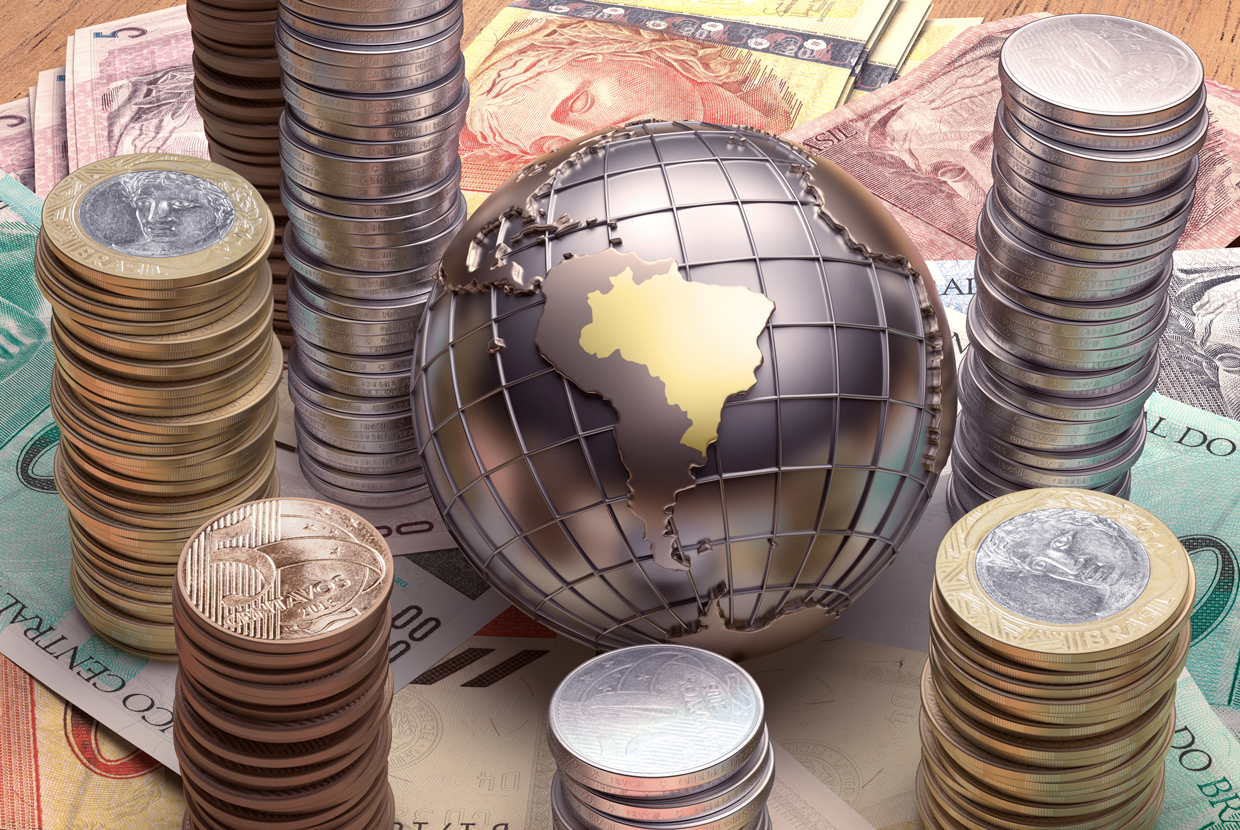RIO DE JANEIRO, BRAZIL – The Central Bank (BC) projection for the negative balance of external accounts this year rose from US$21 billion to US$ 30 billion.
The result corresponds to 1.8% of the Gross Domestic Product (GDP, the sum of all goods and services produced in the country) and reflects, mainly, the expectation of a lower trade balance, with an increase in the projection for imports, from US$239 billion to US$249 billion in 2021.
The forecast for current transactions, which are the purchases and sales of goods and services and income transfers from Brazil to other countries, is in the Inflation Report, a quarterly publication of the Central Bank, released today (16).

In the document, the agency reduced the estimate for economic growth from 4.7% to 4.4% in relation to the previous report, from September.
According to the Central Bank, the increase in the projected value for imports is associated with surprises in the growth of prices of imported goods.
“The difficulty of global supply chains in meeting demand has been longer than previously expected, impacting prices. The upward surprises in the value of imports are fairly widespread in intermediate goods, especially fertilizers, whose prices have risen sharply in recent months. Fuel imports also continue at a strong pace, in an environment of domestic water crisis and high international prices,” says the report.
In exports, the forecast for a record value was maintained, from US$282 billion to US$ 284 billion. The revision reflects the still high level of commodity prices in the year, despite the retraction in the price of some products in recent months, especially iron ore.
“There was again a slight improvement in the scenario for international sales of manufactured products, which should end the year at a level similar to that of 2019, with fuel oils standing out. The exports of semi-manufactured products also point to a high value in 2021, especially the prices of iron and steel products,” explained the Central Bank.
In the services account, the projection of a deficit of US$17 billion was maintained, below the pre-pandemic levels, as a result of the slow return of international travel.
The BC also highlights the lower expenses with equipment rental in the oil sector, a consequence of the nationalization of oil platforms under Repetro, which is the regime that suspends the collection of federal taxes on exports and imports of goods for research and mining of oil and natural gas deposits, especially exploration platforms.
“In primary income, the improvement in corporate profitability was reflected in net profit and dividend expenses, also impacted by the incorporation of more recent information in the ordinary annual review of foreign sector statistics,” says the Central Bank. With this, there was a slight increase in the expected deficit, from US$ 49 billion to US$ 51 billion.
Foreign investment
In case a country registers a negative current account balance, it needs to cover the deficit with investments or loans abroad. The best way to finance the negative balance is through Direct Foreign Investment in the Country (DFI), because the resources are invested in the productive sector.
The projection for DFI net inflows was reduced from US$55 billion to US$ 52 billion (3.2% of GDP) in 2021. In 2020, US$34.2 billion (2.38% of GDP) of such foreign investments were recorded in Brazil.
“Despite the recovery in capital participation being in line with the forecast, the amortizations of intercompany operations [e.g., when the parent company abroad invests in the subsidiary in Brazil] have been higher than previously expected,” the Central Bank explained.
For portfolio investments, the projection for the year was maintained at US$21 billion, which should record net inflows for the first time since 2015.
“The increase in Brazil’s interest differential in relation to advanced economies increases the attractiveness of local debt instruments, attracting foreign flows to securities issued in the country. On the other hand, foreign investment in shares of Brazilian companies has declined in recent months, possibly impacted by fiscal uncertainties [control of public accounts] and the recent decline in commodity prices,” the report says.
Forecast to 2022
The expected current account deficit for 2022 increased from the previous report, from US$14 billion to US$21 billion (1.3% of GDP), also due to the expectation of a lower trade balance. “The worsening in the expected value for exports [from US$289 billion to US$276 billion] reflects the recent deterioration in iron ore and oil prices. The outlook for shipped volume of these two products was also reduced, in line with lower expectations for domestic production,” explained the Central Bank.
For imports, the lowering of the projection, from US$229 billion to US$225 billion, mainly reflects weaker domestic activity than previously expected. Still, regarding imports, the perspective is that, differently from 2021, there will not be significant amounts of Repetro operations in 2022.
In the services account, there was the maintenance of the projection present in the previous report, of US$26 billion. “The increase in the expected deficit compared to 2021 reflects the gradual removal of restrictions on international travel, with an impact on the travel and passenger transport accounts. However, due to the risks associated with covid-19, these accounts are still expected to average below the pre-pandemic level for the year.”
In the primary income account, a similar result to 2021 is expected, around US$50 billion. Interest expenses should be slightly higher than expected, a result of the increased cost of financing and tighter financial conditions in Brazil. “The projection for net earnings expenses was marginally revised downward, given the less favorable scenario for commodities and domestic activity,” the Central Bank added.
Among the main liabilities of the financial account, the projection of a slight increase in the DFI was maintained with respect to 2021. In this scenario, the DFI measured as a percentage of GDP is close to its historical average: 3.2% in 2021 and 3.3% in 2022.

